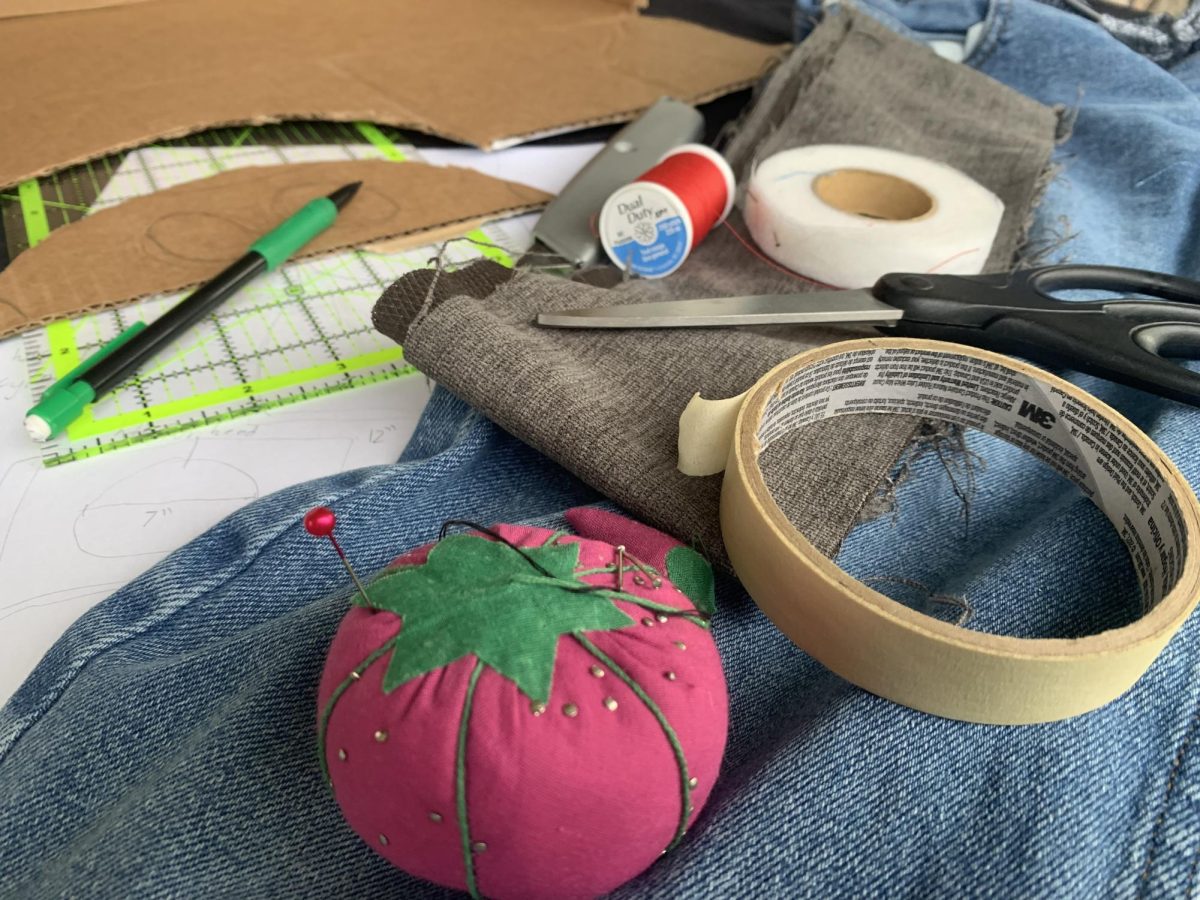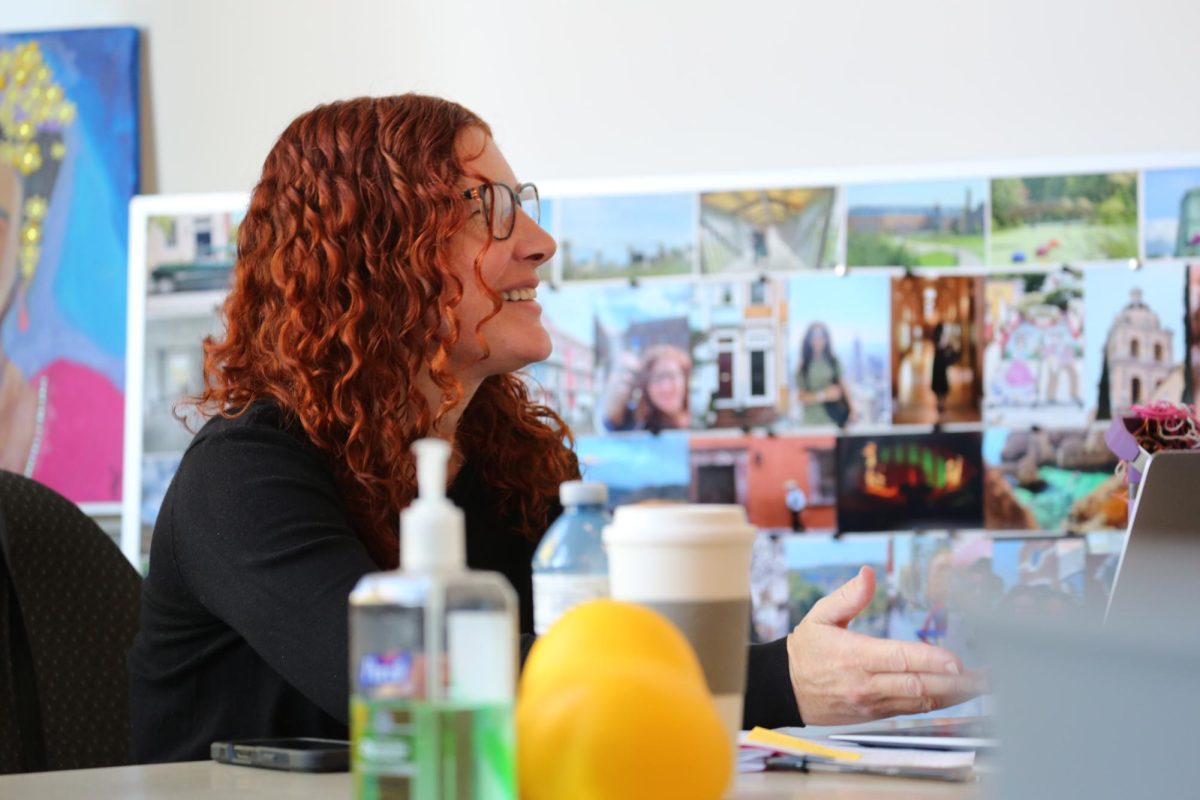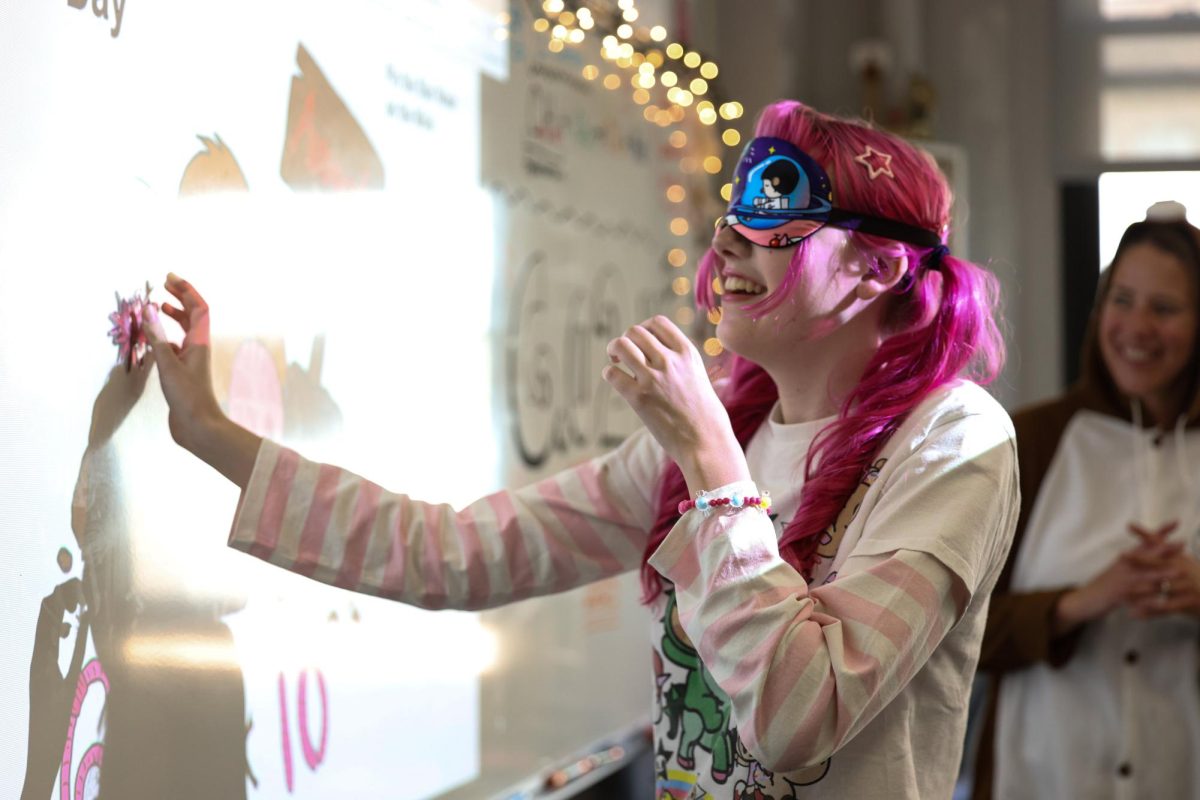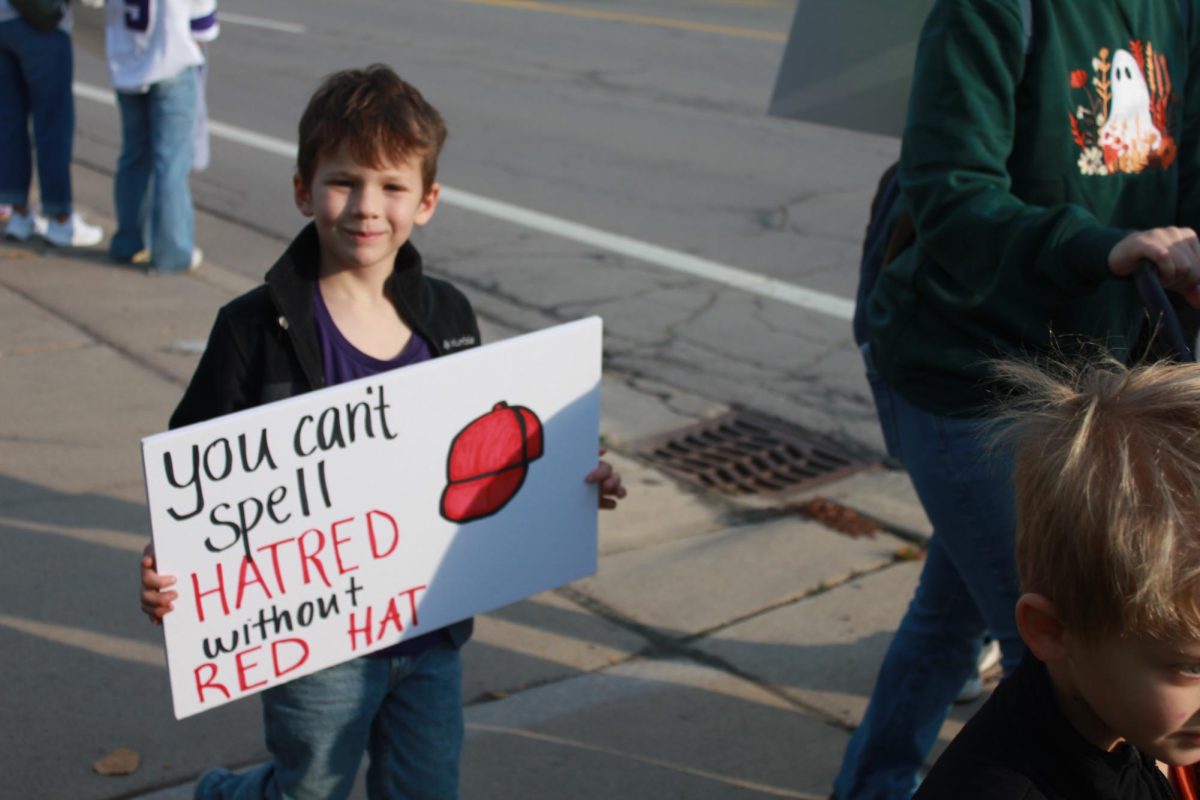“Our purpose last year was to always recognize that there was an entirely different ecosystem in this building before we moved in 1972,” said Marci Tuzinsky, CHS Dean. “We did that piece to celebrate 100 years, where we had renamed the school, Jones School.”
Before CHS was known as Community High School, it was Jones Elementary, a predominantly Black elementary school. Jones was closed in 1965 due to redistricting for racial desegregation purposes. It is an indelible, but also hidden, part of CHS history. As a result, it has always been CHS’s mission to celebrate its history and ensure that students participate throughout the process. For the school year of 2023-24, a documentary about Jones was made and released on February 4, “There Went The Neighborhood: The Closing of Jones School.”
“I think in Ann Arbor, there’s generally a lot of interest in this particular story,” said Joslyn Hunscher-Young, CHS social studies teacher and Forum leader. “Because a lot of folks don’t know about it, and then when they learn about it they’re like, ‘Oh my gosh, how did I not know this?’ I think it’s something that’s been on the minds of a lot of people for a long time.”
Hunscher-Young also provided some insights into the documentary’s producer, Donald Harrison, an independent filmmaker and media educator in the Ypsilanti area.
“He made the Community High documentary,” Hunscher-Young said. “Which came out around 10 years ago. But as he was doing it, he came across a lot of stuff about Jones School. As a result, he started collecting it and had the idea to create a documentary about Jones Elementary. And then it just took a little bit more time and connection and work to get it to happen, both in terms of getting funding and support from the library and getting access to materials like archival photos.”
The Jones Elementary documentary mainly focused on the 1920s through the 1970s, a period when the local Black community thrived before Jones Elementary was re-established and became what is known as Community High School. The documentary highlights the changes in the local neighborhood, covering what that was like for the Black community, where they ended up, and the impacts on the local community. Additionally, the documentary explores the gentrification of the neighborhood, which has transformed into a predominantly white area today.
The documentary conveys the story through interviews with alumni, former news articles and archival photos about Jones Elementary, aiming to provide a viewing experience for people with various backgrounds to understand the history of Community High School.
“It wasn’t any less surprising to me,” Hunscher-Young said. “ I think a lot of people in Ann Arbor are surprised about thinking about desegregation because we so often learn about and talk about it as something that just had to happen in the south of this country. Thinking about what that meant locally, and then the impact that had on black families in particular, I think is something that a lot of folks in America haven’t thought about.”
The documentary’s goal is for everyone in Ann Arbor to learn, engage, and share the local history, understanding the impacts of issues like desegregation not just on a national level but also on a local one.
Before the movie was released, there was also an effort to publicize the documentary for residents around Ann Arbor. Teachers in the Ann Arbor Public School social studies department came at the beginning of February to see the displays from the Ann Arbor District Library that are up in the hallways. At CHS, students and staff will collectively watch the documentary on March 6, though it is also free to view online.
The documentary intends to remind students to be aware that every space they enter has a history and to broaden their understanding of that fact. Therefore, with the intention of the film, Hunscher-Young hopes that the documentary will resonate with students in the community to create further impacts for the future.
“I think it’s particularly important to think about how students and families of color have been treated,” Hunscher-Young said. “Especially in our workplace where we’re always thinking, we’re so diverse, we are super progressive and everybody is great. But it’s not actually like that, and our history is not like that. Now, when you look at things, I think that this documentary could be an important part of people’s growing understanding of the reality that we live in and thinking about what does that mean for what we should be doing right now?”
Learning from history is arguably one of the most crucial parts of building a healthy and diverse school environment. However, students taking action might be just as important. CHS, a predominantly white institution, has students taking action in many ways – attempting to promote a more diverse flow in and out of the school.
“Forum Council has been trying to figure out what the barriers that are preventing lower-income or students of color from coming to Community,” Hunscher-Young said. “When you are a predominately white institution, it takes a whole lot of time to create that change and to make the spaces more inclusive, open and comfortable for other people to join them. I think we have to stick with it and continue to do outreach and continue to think about barriers, while we also need to do a lot more critical reflection.”
Lastly, Hunscher-Young wants to address the importance of open-mindedness and awareness that there is always room for improvement. No matter where CHS is, there are always ways for it to improve its diverse environment as a whole.
“As a student body and the staff we are kind of in this Arbor attitude of like, we’re a community, we’re super diverse, we’re very inclusive,” Hunscher-Young said. “I think we are but I think there’s still a whole lot we can do to make it even better.”

















